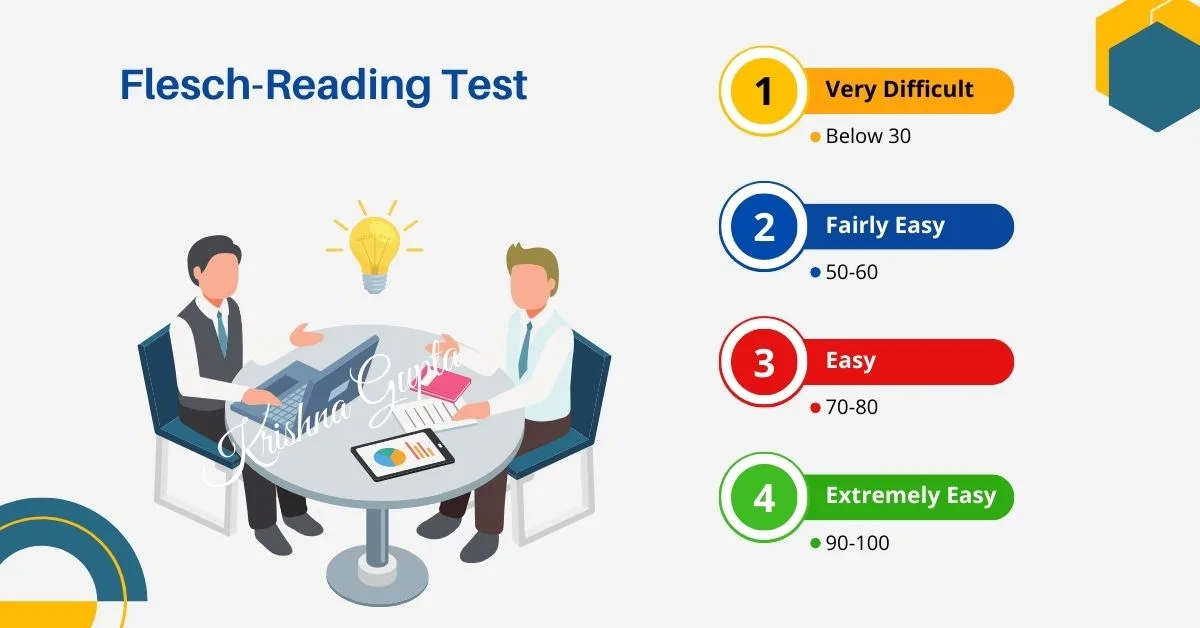The Flesch-Kincaid Test: Simplifying Communication for Maximum ROI
As CEOs, clear communication is a cornerstone of success. We need to engage investors, inspire employees, and navigate complex negotiations. Yet, dense, jargon-filled messages can hinder our efforts. Here’s where the Flesch-Kincaid readability test steps in, offering a data-driven approach to ensure your message lands every time.
Flesch-Kincaid 101: Measuring Clarity for Business Impact
The Flesch-Kincaid test is a straightforward metric that analyses sentence length and word complexity to determine how easy a text is to understand. Scores range from 0 (extremely difficult) to 100 (easily understood by elementary schoolers).
Why should CEOs care? Here’s the ROI proposition:
- Enhanced Engagement: Studies show that audiences are more likely to retain information presented in clear, concise language. This translates to better investor buy-in, more substantial team alignment, and improved stakeholder communication.
- Reduced Risk: Miscommunication can lead to costly mistakes. By ensuring your messages are clear, you mitigate the risk of misunderstandings during negotiations, project execution, or compliance processes.
- Global Expansion: A Flesch-Kincaid-friendly approach makes your communication more universally understood, fostering stronger relationships with international partners and clients.
From Jargon to ROI: Implementing the Flesch-Kincaid Advantage
Ready to harness the power of clear communication? Here’s how to integrate the Flesch-Kincaid test into your workflow:
- Analyse Existing Communication: Run your emails, presentations, and reports through a free online Flesch-Kincaid checker. This will identify areas for improvement.
- Aim for Audience-Appropriate Scores: For most business communication, target a score in the “fairly easy” to “easy” range (50-80). This ensures your message is clear without compromising professionalism.
- Simplify, Don’t Dumb Down: Use active voice, shorter sentences, and everyday words. Replace jargon with clear explanations. The goal is to make your message impactful, not simplistic.
The Flesch-Kincaid test isn’t about dumbing down your communication. It’s about ensuring your brilliance shines through by removing roadblocks to understanding. By embracing clear, concise language, you’ll unlock the full potential of every message, maximising your ROI in every interaction.

What is the Flesch-Kincaid Reading Test?
The Flesch-Kincaid readability test is a tool for measuring how easy a piece of text is to understand. It analyses sentence length and word complexity. The output is between 0 and 100, with higher scores indicating easier reading.
Who it’s for:
- Content Creators: Anyone who wants to ensure their writing is clear and concise for their target audience. This includes CEOs, marketers, technical writers, educators, and anyone wishing to communicate their message effectively.
- Educators: Teachers can use the Flesch-Kincaid test to tailor materials to different classroom reading levels.
- Businesses: Companies can leverage the test to improve communication with employees, customers, and investors. Clear communication can lead to better engagement, fewer misunderstandings, and a stronger brand image.
Who it might not be for:
- Creative Writers: While the Flesch-Kincaid test can be helpful, it shouldn’t dictate all creative writing. Authors might use more complex sentence structures or vocabulary for specific artistic effects.
- Highly Technical Fields: In some very technical fields, there might be a limited set of specific terms that can’t be easily simplified. Here, the focus may be more on ensuring the target audience (other professionals in the field) understands the content rather than achieving a specific Flesch-Kincaid score.
It’s important to remember that the Flesch-Kincaid test is a guide, not a strict rule. It should be used with your judgment about your target audience and the message you’re trying to convey.
The Flesch-Kincaid readability test, often referred to by the simpler term Flesch reading ease score, assesses how easy a piece of text is to understand. It provides a score on an analysis scale ranging from One to Hundred, with a Hundred being the easiest to read.
Here’s a breakdown of what the scores mean:
- 90-100: Extremely easy – understandable by an elementary school student
- 70-80: Easy – understandable by someone in 8th or 9th grade
- 50-60: Fairly easy – understandable by an average adult
- 30-50: Difficult – likely requires some college education
- Below 30: Very difficult – challenging even for college graduates.
Many online tools and software programs can calculate the Flesch reading ease score for a piece of text. This can benefit writers who want to ensure their work is clear, concise, and understandable by their target audience.